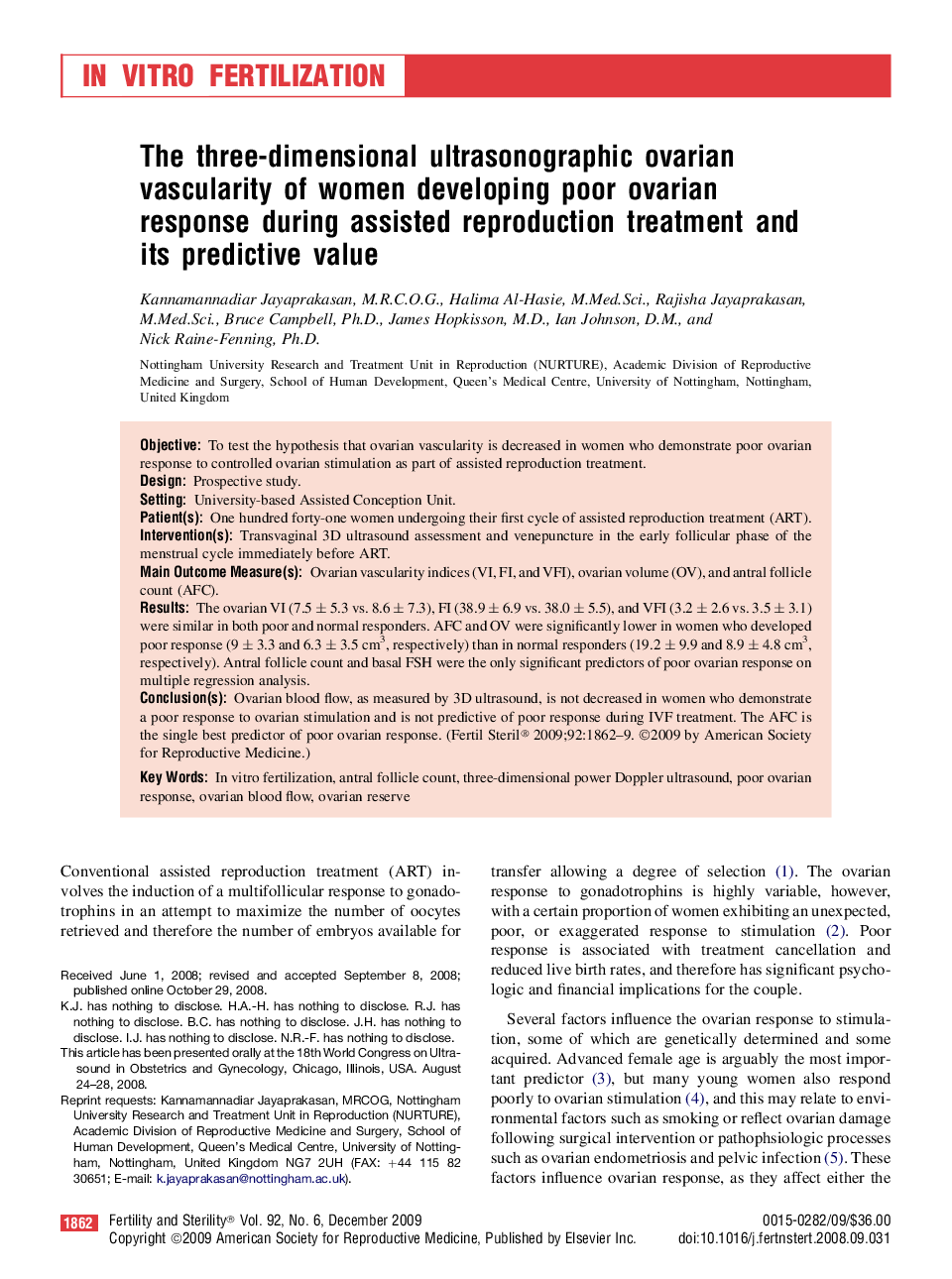| Article ID | Journal | Published Year | Pages | File Type |
|---|---|---|---|---|
| 3936411 | Fertility and Sterility | 2009 | 8 Pages |
ObjectiveTo test the hypothesis that ovarian vascularity is decreased in women who demonstrate poor ovarian response to controlled ovarian stimulation as part of assisted reproduction treatment.DesignProspective study.SettingUniversity-based Assisted Conception Unit.Patient(s)One hundred forty-one women undergoing their first cycle of assisted reproduction treatment (ART).Intervention(s)Transvaginal 3D ultrasound assessment and venepuncture in the early follicular phase of the menstrual cycle immediately before ART.Main Outcome Measure(s)Ovarian vascularity indices (VI, FI, and VFI), ovarian volume (OV), and antral follicle count (AFC).ResultsThe ovarian VI (7.5 ± 5.3 vs. 8.6 ± 7.3), FI (38.9 ± 6.9 vs. 38.0 ± 5.5), and VFI (3.2 ± 2.6 vs. 3.5 ± 3.1) were similar in both poor and normal responders. AFC and OV were significantly lower in women who developed poor response (9 ± 3.3 and 6.3 ± 3.5 cm3, respectively) than in normal responders (19.2 ± 9.9 and 8.9 ± 4.8 cm3, respectively). Antral follicle count and basal FSH were the only significant predictors of poor ovarian response on multiple regression analysis.Conclusion(s)Ovarian blood flow, as measured by 3D ultrasound, is not decreased in women who demonstrate a poor response to ovarian stimulation and is not predictive of poor response during IVF treatment. The AFC is the single best predictor of poor ovarian response.
